We already know that the tragic mass extinction of the dinosaurs marked the end of the Mesozoic Era. In fact, it was not just the dinosaurs that became extinct. Those aquatic reptiles that were once widely distributed in the ocean-Ichthyosaur, plesiosaur, mosasaurus, etc., as well as flying reptiles such as pterodactyls, were not able to survive from the Mesozoic era. Escaped from the final disaster. If you count the countless invertebrates, the list of victims in this catastrophe is even longer.
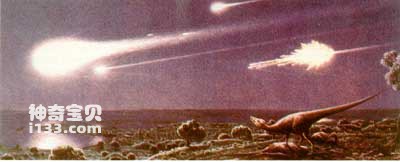
The mass extinction of the dinosaurs
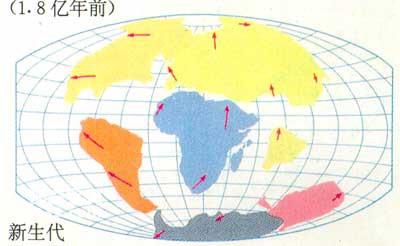
The location of each continent at the end of the Mesozoic Era
In fact, when the catastrophe occurred at the end of the Cretaceous, our earth has been or is quietly changing. At the end of the Mesozoic Era, the relationship between the continents on the earth was basically what it is now. The Bering Strait appeared between Asia and North America, an isthmus connected them between North and South America, and Eurasia and Africa were connected by the Middle East. Oceania, once part of Asia during the Mesozoic Era, has been completely isolated and remains an island continent until now.
The establishment of the modern connection between the continents is largely due to the rise of the earth's crust in the late Cretaceous. Those parts of the continent that were low-lying and submerged by shallow seas in the middle and late Mesozoic Era rose to the surface in the late Cretaceous and subsequent Cenozoic Era, and the shallow seas retreated significantly. The orogeny that began during this period laid the foundation for the Himalayas, Alps, The prototype of important mountain ranges such as the Rockies and the Andes.
With the formation of the modern continental outline, the rise of large land masses and the rise of new mountain systems, world-wide climate changes began. In the middle and late Mesozoic Era, most of the world was tropical and subtropical. The climate was relatively consistent from the equator to very high latitudes, with little seasonal variation. Therefore, tropical plants and dinosaurs could grow from northern Eurasia to Canada. Distributed to the tip of the southern continent and Oceania. As the continents rose and new mountain systems were formed, the environment on the Earth began to gradually change in a diversified direction. Climate zones gradually formed and became more and more distinct from each other as time went on. The change of seasons is also becoming more and more obvious, especially in high latitudes, where the cold winter and hot summer form a huge contrast.
Of course, this dramatic change in the world's climate was already changing the face of Earth's plants long before the extinction of the dinosaurs. Before the end of the Cretaceous period, modern deciduous trees had already appeared. What used to be a verdant forest of ancient ferns and conifers was updated with oaks, willows, catalpas, and many other familiar trees. A mottled appearance, with an increased diversity of plants in the biome.
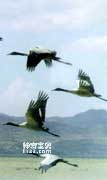
Birds
Perhaps it was these changes in the earth itself that were the root cause of the extinction of the dinosaurs and the reptiles that dominated the Mesozoic Era, and the role of factors such as asteroid impacts was just to ignite a prepared explosive pack. So. But no matter what, dinosaurs and a large group of reptiles died out dramatically at the end of the Cretaceous. The remaining members of the reptile family were only Eosuchians, turtles, crocodiles, lizards and snakes, and their distribution was very limited. The rhinoceles, and Eosuchus only survived until the early Cenozoic Era, and did not continue into modern times like several other lucky reptile relatives.
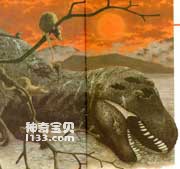
Mammals
The real winners after the disaster are actually birds and mammals. Cenozoic birds developed extremely rapidly on the basis of Mesozoic birds, developing a particularly diverse group of flying vertebrates. Mammals, although they appeared with dinosaurs as early as the Triassic, have always lived in the shadow of dinosaurs. After the extinction of those reptiles, many ecological niches were vacated. The surviving mammals quickly radiated and differentiated into numerous groups that occupied these ecological niches and have maintained their dominance until today.
Who survived the disaster
We know that five orders of mammals have developed in the Mesozoic Era: Stylodonts, Triconodonts, Paradonts, Paleodonts and Polyodonts.
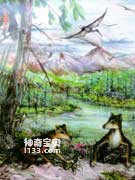
Zhanghetherium - a kind of synodont
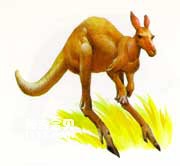
Giant kangaroo - an ancient marsupial
Not all of these ancient mammals survived into the Cenozoic Era. Triconodonts, Synodonts, and Palaeotheria became extinct as early as the end of the Early Cretaceous. They did not even have the chance to witness the catastrophe at the end of the Mesozoic Era. None caught up.
However, before the extinction of the ancient beasts, two new mammal groups, marsupials and placentals, were differentiated. These two major categories of mammals have a more complete ability to adapt to changing ecological environments. Therefore, their strong competitive ability not only caused the three ancient mammals mentioned above to withdraw from the stage of history soon after their appearance, but also Moreover, they tenaciously survived the catastrophe at the end of the Mesozoic Era, and in the subsequent Cenozoic Era, they occupied almost all ecological niches vacated by dinosaurs, and were distributed in almost every corner of the earth.
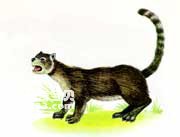
Palaeoschizopod—An ancient placental animal
In addition, polyodonts also tenaciously survived the catastrophe at the end of the Mesozoic Era. However, they were too old after all, and their competitiveness was far inferior to that of the newly born marsupials and placentals. Therefore, after they survived the catastrophe, It didn't take long before it became extinct at the beginning of the Cenozoic Era.
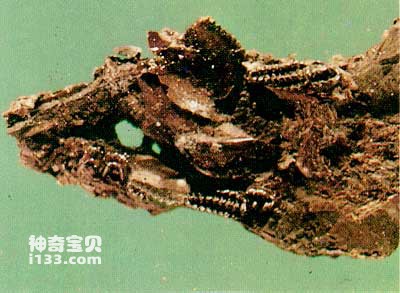
A multi-pointed animal fossil
Finally, there is a mysterious mammal, the monotremes, which like hermits still live in some remote corners of Australia. Due to the lack of fossil discoveries, scientists have never been very clear about the family relationship of this mysterious animal. However, judging from the very primitive characteristics they retain (such as egg laying), they definitely represent the oldest family. Relics of mammals. Some scientists speculate that monotremes are likely descendants of the ancient Stylodonts.
animal tags:
We created this article in conjunction with AI technology, then made sure it was fact-checked and edited by a Animals Top editor.